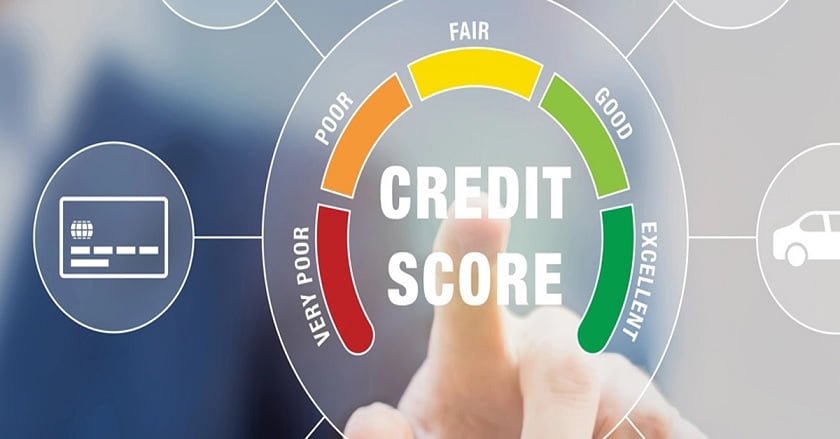How To Set Financial Goals in 3 Easy Formula 2025

Set Financial Goals: This article will teach you how to set financial goals that are important to you. Use these 3 simple formulas for your successful financial goals with examples.
Have you ever started a budget with good intentions only to abandon it after a few weeks (or days) because it’s too restrictive? Budgeting requires sacrifices that can become irritating quickly, especially if you aren’t rewarded along the way.
The problem is that it’s easy to get stuck without meaningful financial goals and a budget strategy. This article will teach you how to set and achieve financial goals that are important to you.
Read More: Is Russia’s decision to price energy in roubles a threat to the US dollar?
What Are Financial Goals?
Financial goals are financial objectives that you want to achieve, such as earning six figures in a year or saving $2,000 per month. However, financial goals can also be money-related objectives, such as purchasing a beachfront home or funding your dream vacation to the Islands. You can engineer a plan to get the money you need by identifying something you want to buy, pay for, or experience in the future. Your financial goal is represented by the monetary target.
You can achieve two types of goals:
- Short-term goals: These are things you want to accomplish soon, within a year or less.
- Long-term goals: Necessarily require taking a step back and looking at the big picture. They can range from two years to 50 years in the future.
Tip: When setting goals, it is beneficial to have a mix of short- and long-term objectives. It can be difficult to continue working every day toward a goal that is 30 years away. However, if you work toward a cohesive plan that combines weekly, monthly, and long-term goals, you’ll receive rewards along the way that will keep you motivated.
How To Set Financial Goals
Where should you begin once you’ve decided you want to set financial goals? If your goals aren’t aligned with what you truly desire, you’re unlikely to stick with them when things get tough. So take some time to think about and imagine the life you want. What do you want your future to be like? Who will be present? Where will you be taking up residence? What do you wish to possess and experience? Every person’s aspirations will differ slightly, and the financial goal you set will be determined by a variety of factors, including your cost of living.
Here are some examples of both short- and long-term financial goals to get you started.
Examples of Short-Term Financial Goals
- Create an emergency fund
- Join a cooking class
- Repaying a credit card
- Purchase a bike
- Take a family trip to Hawaii
- Remodel a room in your house
Examples of Long-Term Financial Goals
- Start and run a profitable small business.
- In retirement, live comfortably, whatever that means to you.
- Pay for your kid’s college education without taking out a loan.
- Have one vacation home.e
Important: When it comes to financial goals, take some time to write down what you want to achieve in life. Don’t be shy! It’s a good idea to start big and work your way down to smaller goals, such as something you can complete this month.
“The best goals include a personal and sincere ‘why’ that adds meaning and importance to them,” Michael Eckstein, accountant, and owner of Eckstein Advisory, said. “Your ‘why’ helps carry you through the beginning stages of building a habit, the tough stretches while reaching your goals, and is a constant reminder of why you’re doing it.”
Eckstein also stated that the objectives do not have to be extremely lofty or large. It is valid as long as the goal is important to you.
Read More: Is Russia’s decision to price energy in roubles a threat to the US dollar?
How Do Your Dreams Come True?
Now that you’ve written down your dreams, it’s time to devise a strategy to bring them to fruition. You’ll need to figure out how much it will cost to achieve each of your objectives, which may necessitate some research and simple math. Based on your income and expenses, you’ll need to devise a strategy for when and how you’ll achieve each goal.
Making sure your financial goals are SMART is a great framework to use when developing a plan. It’s an acronym that means your objectives should be specific, measurable, achievable, relevant, a nd time-bound. Assume you want to put money aside for an emergency. Here’s what it would look like if you followed the SMART principles:
- To be more specific, I’d like to save $20,000 for an emergency fund.
- Measurable: I’d like to save $4,000 per year, which works out to $333 per month and $11 per day.
- Achievable: My budget allows for up to $450 in disposable income, allowing me to save the targeted $333 per month.
- Relevant: Based on my income and expenses over the previous year, I should be able to meet this goal.
- Time constraint: I want to save $20,000 within the next five years.
You can create a plan to accomplish the items on your list by ensuring that each of your goals adheres to the SMART framework. Then you must stick to the plan, track your progress, and celebrate your victories.
Make your daily goals visible so that they remain top-of-mind. Consider posting them on a bulletin board, a notepad next to your laptop, or in calendar reminders.
FAQs
Q. How do you prioritize your financial objectives?
Once you’ve written down all of your goals, go over them to see which ones are the most important to you. Determine which are needs and which are desires. For example, while one person may prioritize paying off student loan debt over saving for a wedding, the opposite may be true for another. It all depends on the individual. Once you’ve identified your objectives, prioritize them and pursue them accordingly.
Q. How frequently should you review your financial goals?
Track your progress by checking in at the end of each month (or more frequently if you have some short-term goals). During this time, consider whether your goals are still in line with where you want to go. Then, at the end of each year, go over your goals in greater detail. You may want to take a more aggressive approach based on the results or rethink how you can meet your current targets.
Q. What impact does your tax withholding have on your budget or financial goals?
If you get a tax refund at the end of the year because too much of your money was withheld for taxes, you will miss out on the opportunity to invest it and earn interest on it during the year. Getting a lump sum at the end of the year, on the other hand, can be beneficial for some people. For example, if you have difficulty saving money, your tax return may enable you to make a significant contribution to one of your goals.
Conclusion
While budgeting often gets a bad rap, it feels different when you’re doing it to create the future you truly want. Every day, you make a series of small but strategic decisions that gradually bring your dreams to fruition. Furthermore, by combining short- and long-term goals, you are rewarded along the way.



